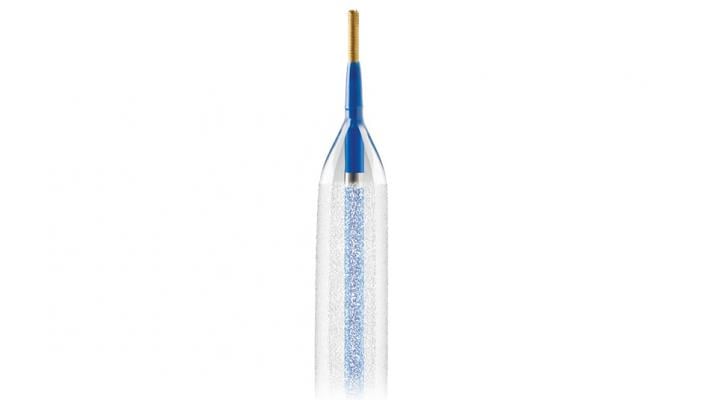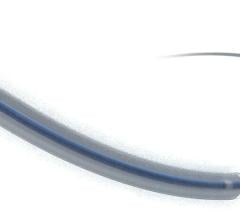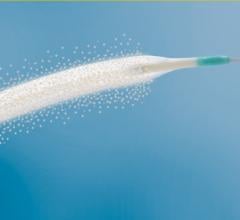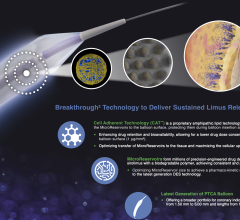
May 29, 2019 — Philips announced the three-year results from the ILLUMENATE Pivotal trial and the ILLUMENATE European randomized clinical trial (EU RCT). These two trials are part of a series of five trials evaluating the safety and efficacy of Stellarex .035″ low-dose1 drug-coated balloon (DCB) to restore and maintain blood flow in the superficial femoral artery and popliteal arteries of patients with peripheral arterial disease. The results were evaluated compared to treatment with uncoated balloons, the current standard of care.
S. Jay Mathews, M.D., of Bradenton Cardiology Center in Bradenton, Fla., presented the data as a late-breaking trial at the New Cardiovascular Horizons (NCVH19) Annual Conference, and highlighted the following results:
The ILLUMENATE Pivotal trial results show that at 36 months, 64.2 percent of the patients treated with Stellarex maintained blood flow through the treated segment of the diseased artery, compared to 51 percent of the patients treated with an uncoated balloon, demonstrating continued durability of the procedure;
The ILLUMENATE Pivotal patient pool was the most complex studied in a randomized clinical trial. The pool included patients with the highest rates of comorbidities, such as diabetes and renal insufficiency, while 43.9 percent also had severely calcified lesions;
The ILLUMENATE EU RCT results show that at 36 months, 67.5 percent of the patients treated with Stellarex maintained blood flow (assessed through blinded core-lab adjudicated patency), compared to 59.9 percent of the patients treated with an uncoated balloon; and
Through three years, both studies showed no significant difference in mortality compared to treatment with uncoated balloons. The mortality rate of patients treated with Stellarex in the ILLUMENATE Pivotal trial was 10.1 percent, compared to the mortality rate of patients treated with an uncoated balloon of 11 percent. The EU RCT showed mortality rates of 9.4 percent for patients treated with Stellarex, compared to 8.5 percent for patients treated with an uncoated balloon.
“The three year data of the ILLUMENATE Pivotal trial and ILLUMENATE EU RCT add to the robust and consistent multi-year data of the Stellarex program,” said Mathews. “The demonstrated durability of Stellarex in the complex patient pool of the ILLUMENATE Pivotal trial, which are patients that are at high risk for restenosis, a recurring blockage, is unique in the industry. Moreover, we continue to see no significant difference in mortality rates between patients treated with Stellarex and those treated with uncoated balloons, which confirms our confidence in the safety profile of Stellarex.”
The announcement of the three-year results from the ILLUMENATE Pivotal trial and the ILLUMENATE EU RCT follows the release in January 2019 of the most recent pooled analysis of patient-level data of more than 2,300 patients treated with Philips’ Stellarex DCB in above-the-knee (ATK) studies, which reinforced the strong safety profile of Stellarex.
The Stellarex .035 DCB is designed to restore and maintain blood flow in diseased femoral and popliteal arteries. It is U.S. Food and Drug Administration (FDA)-approved in the U.S. and CE marked in Europe. Stellarex features the EnduraCoat Technology, a coating consisting of polyethylene glycol as the base material, the so-called ‘excipient,’ and a combination of amorphous and crystalline paclitaxel particles dispersed in it. EnduraCoat provides efficient drug transfer, effective drug residency with high coating durability and minimal particulate loss, and therefore enables a low therapeutic drug dose.
For more information: www.usa.philips.com/healthcare
Reference
1. Low-dose DCBs are those that deliver a dose of only 2 micrograms of the drug paclitaxel per square millimeter, which is lower than some other DCBs on the market.


 March 01, 2024
March 01, 2024 








